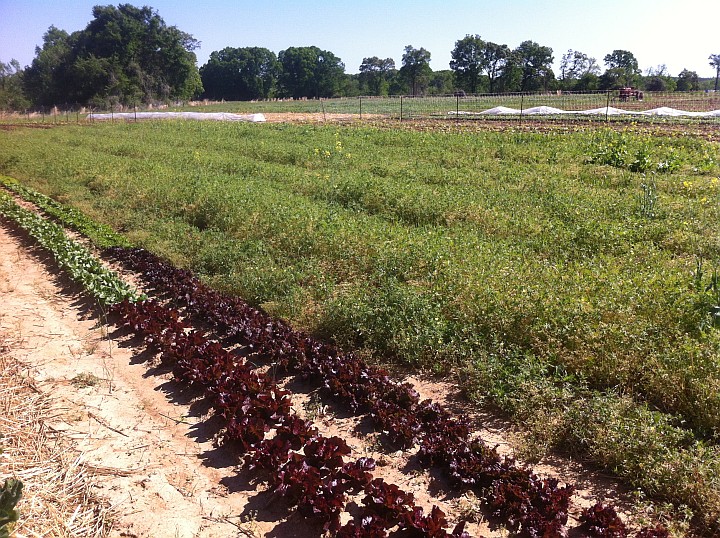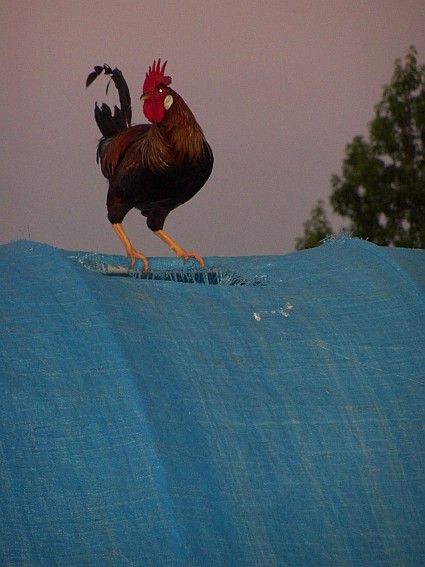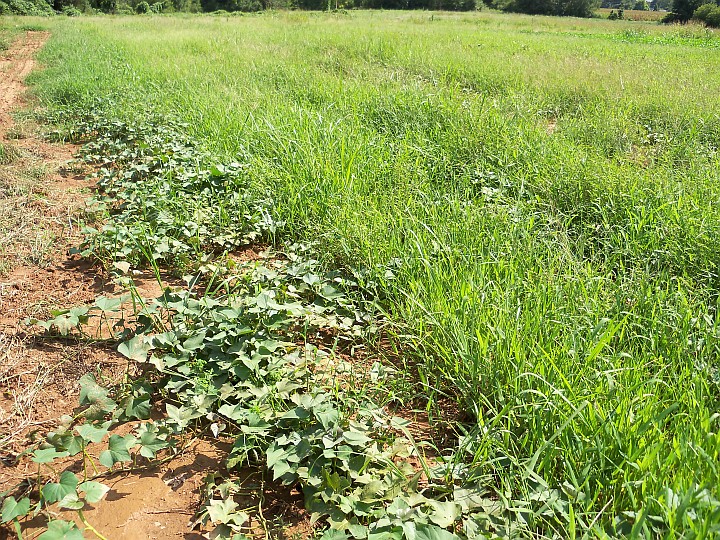I am often solicited for gardening advice by customers at the farmers market. We are more than happy to help when we can. Home gardeners are great farmers market customers because they are hooked on the taste of home grown veggies that you just can’t get at the grocery store. My #1 piece of gardening advice is “don’t get discouraged”. Stuff goes wrong, plants fail to produce or die. Compost happens, as they say. Some people are green thumbs, everything they touch turns to garden gold. I am not one of those people. I am not always believed when I say this to the woeful gardener whose cucumber patch just got overwhelmed by pests (for example) because I am usually standing behind a table full of our farm’s bounty. It is true, we have plenty of failures. For some of them we can blame nature, for others we can only blame ourselves. You just don’t see them, because only our successes make it to market.
So here is a window into one of those failures – our first try at a winter-kill cover crop. One of the challenges we face is preparing the soil for early spring planting. Leaving the soil bare over the winter helps ensure that it will dry out early enough to get the tractor into the field to plant all of the tasty veggies you are enjoying now. Unfortunately, leaving the soil bare over the winter also exposes it to erosion by winter rains. Plant roots are the urban centers of subsoil life, so bare soil is also biologically vacant – not a good thing for ecological farmers like us who depend on the soil food web to deliver nutrients to our plants and build healthy soil structure. One potential solution is planting a winter-kill cover crop. Last summer we made beds for the broccoli and cabbage we were to plant this spring, then planted a blend of warm season plants such as soybeans, sun hemp, cowpeas, millet and sudan-grass as a cover crop. In late fall, the cover crop was killed back by freezing temperatures. The idea is that the plant material creates a deep mulch over the ground into which you simply tuck your spring transplants.
We planted our first round of broccoli and cabbage into those beds this spring and I can now report that they are completely, 100% engulfed in weeds. What happened? We presume that the residue left by the cover crop was not dense enough to suppress weeds. What are we doing about it? Mostly I am pretending it is not there. It might be better to plow it under before all those weeds go to seed but we are super busy planting right now and I am still holding out to see if we still get some cabbages out of the wilds. Right now I am calling it a beneficial insectiary, admiring the lovely Chinese cabbage flowers, and hoping it will attract bees for the melons, squash and cucumbers we just planted next door.
Our winter-kill cover crop is a fiasco. It is so bad that it is funny. Trying new things and laughing at your mistakes are keys to having fun in the garden. As hard as we work, it had better be fun most of the time. And we are not giving up on the winter-kill cover crop concept, either. We’ll let you know how it goes next year.





